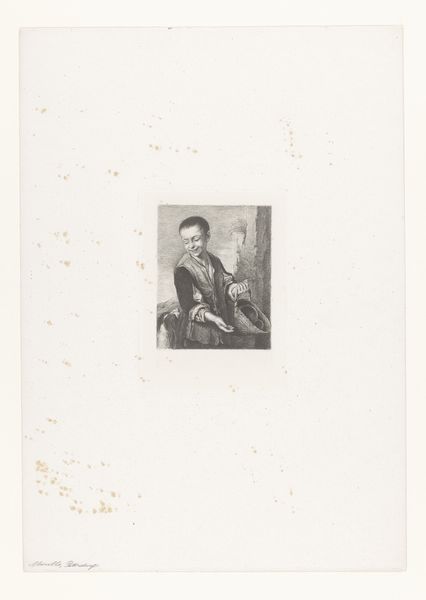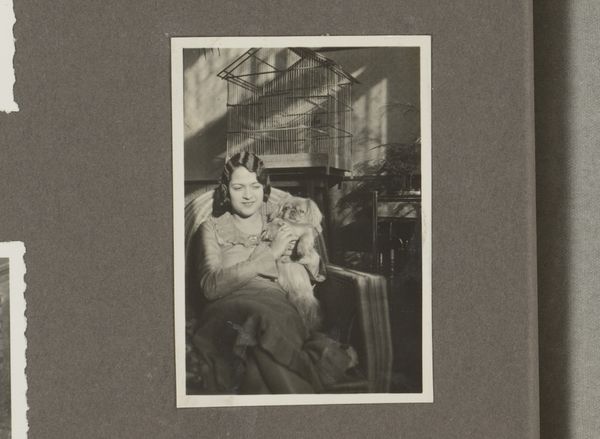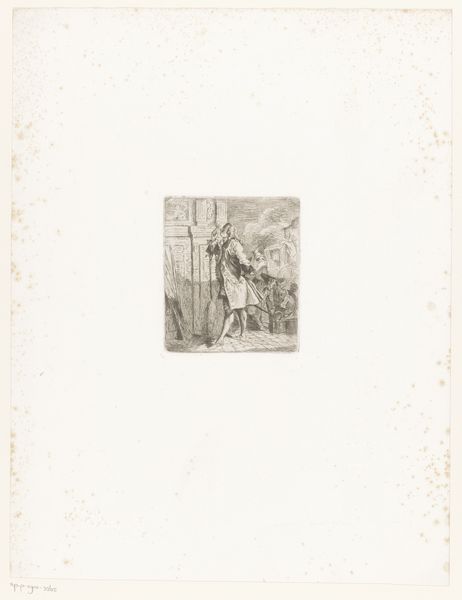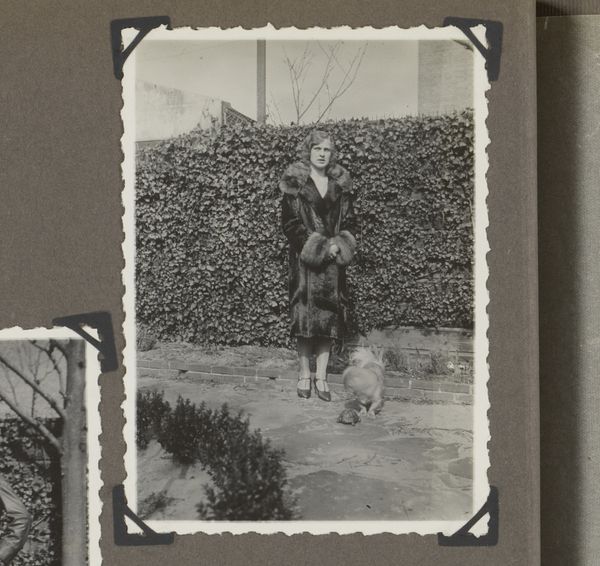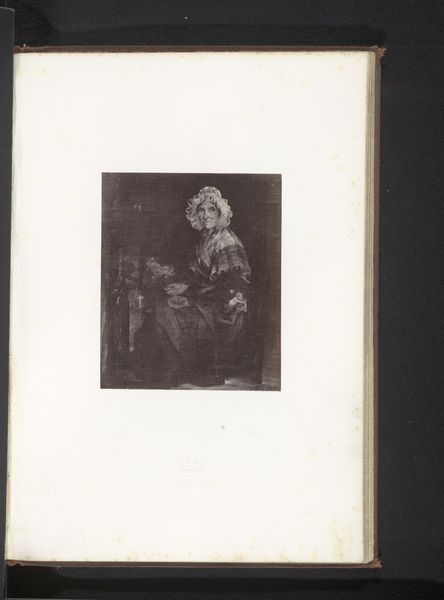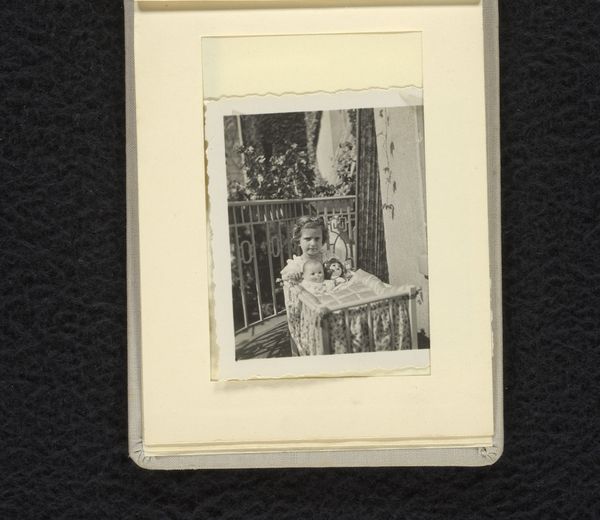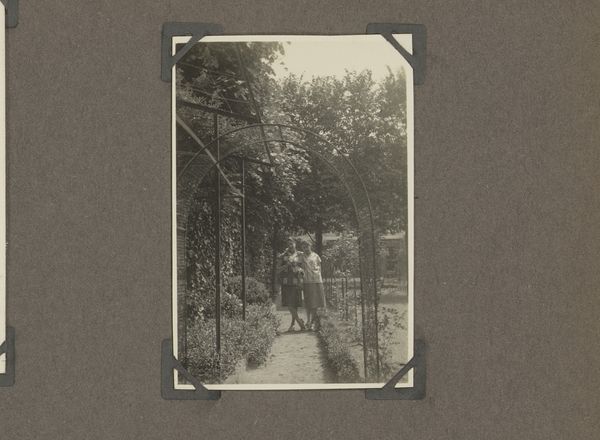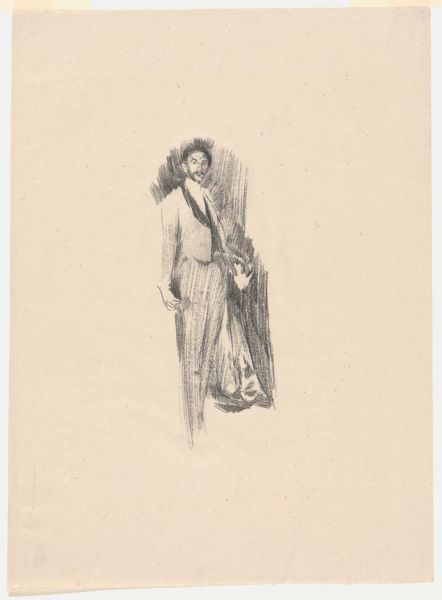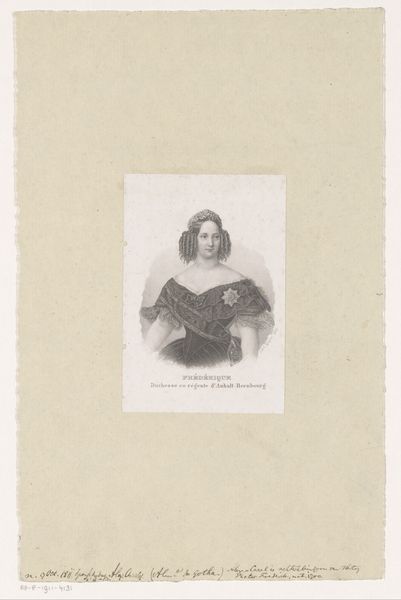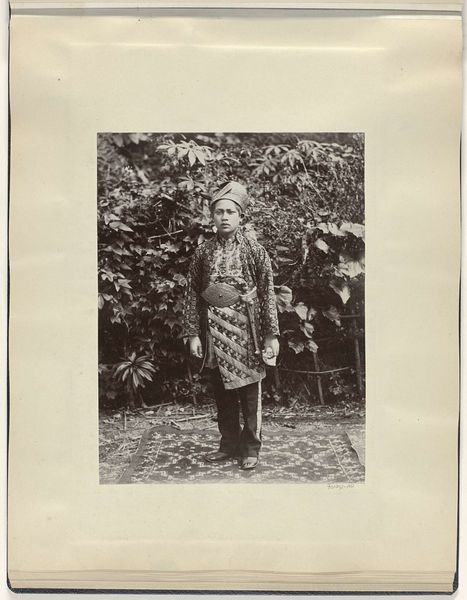
photography, gelatin-silver-print
#
portrait
#
figuration
#
photography
#
historical fashion
#
gelatin-silver-print
#
modernism
Dimensions: height 83 mm, width 59 mm
Copyright: Rijks Museum: Open Domain
Curator: Looking at "Portret van Sophia Josephin Kijdsmeir, genoemd tante Non"—it’s a gelatin silver print, dating roughly from 1930 to 1935. Editor: That fur coat! It practically radiates old-world luxury. Though there’s something also quite unassuming about it. Sort of everyday opulence, if that makes sense. Curator: It does! And gelatin-silver prints, popular then, allowed for a broad tonal range—vital for capturing such textures. This print, with its subdued lighting, truly invites contemplation about materials and processes behind constructing identity. I also see the construction of gender as interesting and potentially class related. Editor: Absolutely. The whole ensemble tells a story of status achieved, doesn't it? Fur wasn’t exactly democratic attire! Plus, think about the labour involved – trapping or farming animals, processing, sewing. Layers upon layers of making, literally. It’s a study in value chains and, ultimately, consumption. Curator: Beyond the fur, I’m captivated by her gaze, it almost suggests a slight world-weariness, softened by…perhaps pride? Editor: I’d agree with the slight weariness. And the formal pose with the fur feels intentionally at odds with the slightly mundane backyard. You’ve got the rough wooden fence, a bit of vegetation poking out… very much down to earth. Almost, I think, subverting some expectations about her lifestyle implied through fashion. Curator: Indeed, the photographer seems to use this juxtaposition of material status with natural, perhaps even quotidian setting, to reveal something quite intimate about Sophia's persona. Or about all our personae... the outside against the inside. Editor: A bit of constructed reality mixed with some solid backyard grit, yes. A bit of the old "how the other half lives", though without quite the grim misery narrative... More "how everyone lives." I love the sheer artifice in such a setting; its unpretentiousness belies careful craftsmanship. Curator: Agreed, an image to keep coming back to—where initial impressions morph into nuanced reflections about ourselves, as viewers. Editor: It asks good questions. Craft, class, construction of self and then photographic rendering of those combined themes. I like that it is asking more than answering.
Comments
No comments
Be the first to comment and join the conversation on the ultimate creative platform.
